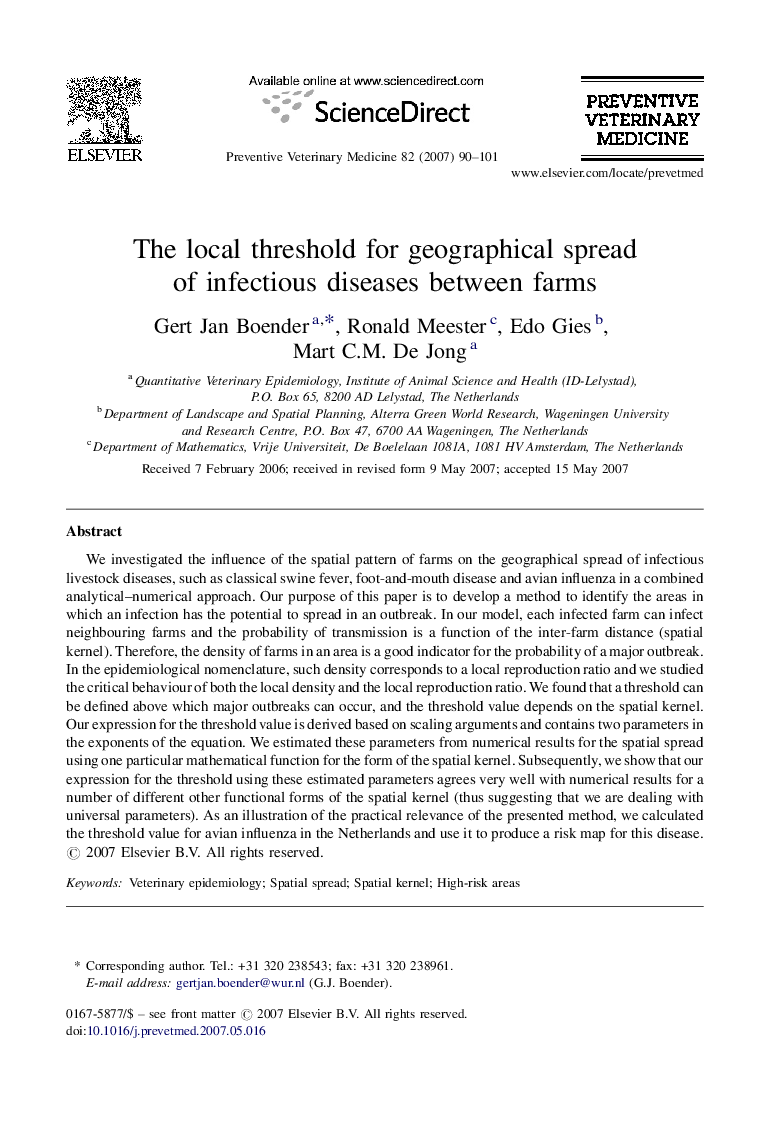| Article ID | Journal | Published Year | Pages | File Type |
|---|---|---|---|---|
| 2453306 | Preventive Veterinary Medicine | 2007 | 12 Pages |
We investigated the influence of the spatial pattern of farms on the geographical spread of infectious livestock diseases, such as classical swine fever, foot-and-mouth disease and avian influenza in a combined analytical–numerical approach. Our purpose of this paper is to develop a method to identify the areas in which an infection has the potential to spread in an outbreak. In our model, each infected farm can infect neighbouring farms and the probability of transmission is a function of the inter-farm distance (spatial kernel). Therefore, the density of farms in an area is a good indicator for the probability of a major outbreak. In the epidemiological nomenclature, such density corresponds to a local reproduction ratio and we studied the critical behaviour of both the local density and the local reproduction ratio. We found that a threshold can be defined above which major outbreaks can occur, and the threshold value depends on the spatial kernel. Our expression for the threshold value is derived based on scaling arguments and contains two parameters in the exponents of the equation. We estimated these parameters from numerical results for the spatial spread using one particular mathematical function for the form of the spatial kernel. Subsequently, we show that our expression for the threshold using these estimated parameters agrees very well with numerical results for a number of different other functional forms of the spatial kernel (thus suggesting that we are dealing with universal parameters). As an illustration of the practical relevance of the presented method, we calculated the threshold value for avian influenza in the Netherlands and use it to produce a risk map for this disease.
